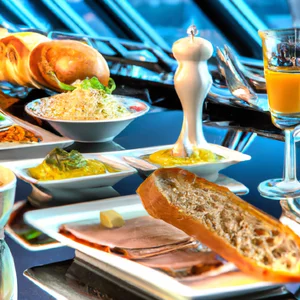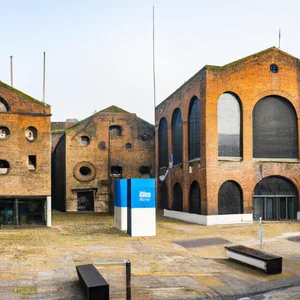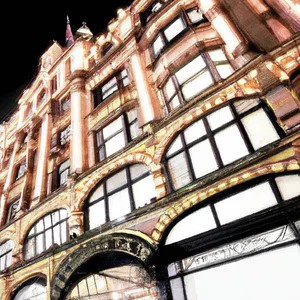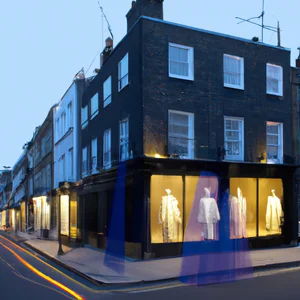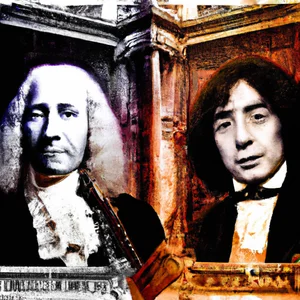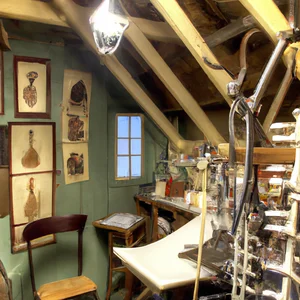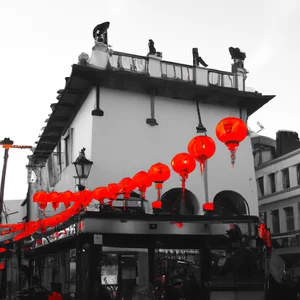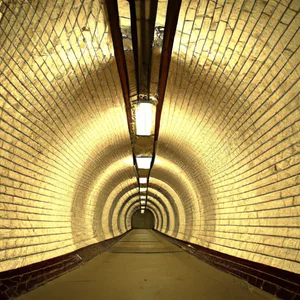Book your experience
The Royal Exchange: Neoclassical architecture in the financial heart of London
The Royal Exchange: a piece of neoclassicism in the midst of London’s financial turmoil
So, let’s talk about the Royal Exchange, a place that, to be honest, is a real gem in the beating heart of London. When you go there, you feel like you’re walking into a movie, with those giant columns that seem to say: “Hey, there’s serious business here!” It’s a bit as if the architecture hugged you and told you that a lot of history has been written here, within these walls.
The first time I saw it, I felt like a fish out of water, but in a good way, you know? I was walking around the City, between one coffee and another, and boom! The Exchange has emerged as a gentle giant. The elegant lines and refined details of that neoclassical almost make you want to put on a top hat and start haggling like in period films.
I remember stopping to watch a group of tourists taking selfies, all smiling and their eyes shining. And I thought, “Man, what a great place to reflect on how the business world has changed over time!” Not that I’m a financial expert, but I mean, I also have my ideas about how this architecture tells a story of power and prestige.
In short, the Royal Exchange is like an open book that speaks of a rich past, of traders and adventurers, of challenges and successes. It’s as if every stone has something to say. And who knows, maybe it’s also a bit of a reflection of ourselves, in a certain sense. I think that, walking there, you can feel part of something bigger. But again, I’m not 100% sure. Maybe it’s just my imagination running wild!
However, if you are in the area, don’t miss the opportunity to take a look. It is a place that, in my opinion, deserves to be explored. Of course, there are more modern and glittering places, but the Exchange has a unique charm, like a good old friend who tells you stories of times gone by.
The fascinating history of the Royal Exchange
A personal memory
I vividly remember the moment I first set foot in the Royal Exchange. Sunlight filtered through the large windows of the majestic structure, illuminating the neoclassical details that adorn the building. I was surrounded by an atmosphere of grandeur and history, almost as if the voices of the merchants of the past still resonated within the walls. This place, once the beating heart of London commerce, has a fascinating history that deserves to be told.
A journey through time
Opened in 1568 by Sir Thomas Gresham, the Royal Exchange was designed as a place where merchants could meet to do business. The first structure was destroyed by fire in 1666, but was quickly rebuilt. The current building, completed in 1844 and designed by architect Sir William Tite, represents a masterpiece of neoclassical architecture. With its imposing columns and grand central atrium, the Royal Exchange is not only a place of business, but also a symbol of London’s economic power.
An insider tip
If you want to immerse yourself in the history of the Royal Exchange, try visiting it on one of its guided tours, which are often led by guides who tell little-known anecdotes. One fascinating detail you may discover is that, despite its reputation as a financial centre, the Royal Exchange also hosted a variety of activities, including concerts and theater performances, making it a cultural hub as well as a commercial one.
The cultural impact
The Royal Exchange has had a significant impact on London’s and, by extension, global economic culture. Its existence helped create a trading network that shaped the dynamics of international trade. This building is not only a testament to British economic history, but also a symbol of the resilience and innovation that characterizes the city.
Sustainability and responsibility
Today, as we approach an era of greater environmental awareness, the Royal Exchange is playing its part. Through initiatives to reduce energy consumption and promote sustainable business practices, it contributes to a more responsible future for tourism and trade.
An experience not to be missed
For those looking to explore the Royal Exchange, I recommend taking a moment to sit in the café inside, sipping tea while taking in the surrounding architecture. This is a perfect way to appreciate the beauty of the place, reflecting on its past and looking to the future.
Mythbusting
A common misconception about the Royal Exchange is that it is an exclusive place, accessible only to those in the financial sector. In fact, the building is open to all and offers a unique experience to anyone interested in London history and culture.
A final reflection
Having explored the rich history of the Royal Exchange, I wonder: How might this iconic place continue to influence future generations of traders and visitors? The answer lies in how each new visitor interacts with its history and the culture of London, bringing a piece of that past into the present.
Neoclassical architecture: a masterpiece to discover
When I first stood in front of the Royal Exchange, I felt like I was standing in front of an imposing architectural deity, with its granite façade and Doric columns rising majestically under the London sky. It was a spring afternoon, and the sun’s rays illuminated the sculpted details, revealing the beauty of an era when architecture was not just a matter of functionality, but also of artistic expression. I remember feeling a deep connection to history, as if each stone told a centuries-old story of trade and culture.
An architectural masterpiece
Built between 1841 and 1844, the Royal Exchange is a splendid example of neoclassical architecture. Designed by architect Sir William Tite, the building features a large central dome, surrounded by a colonnade that invites visitors to immerse themselves in the elegance of its design. Every corner reveals finely crafted details, from the Corinthian-style decorations to the bas-reliefs that tell of the prosperity of London trade. For those who wish to delve deeper into its history, it is possible to take part in guided tours that offer an unprecedented vision of the structure and its secrets.
An insider advises
A little-known tip concerns the possibility of visiting the area beneath the Royal Exchange, where you can discover the archaeological remains of ancient Roman structures. This hidden corner offers an interesting contrast between the past and the present, revealing how London has evolved over the centuries. Don’t forget to ask the staff about it, who are often keen to share anecdotes about this forgotten treasure.
Cultural impact
The Royal Exchange is not only an architectural masterpiece, but also a symbol of London’s economic power. Its construction represented a pivotal moment in the city’s history, connecting commerce with an art form that continues to inspire architects and visitors. The structure hosted merchants, bankers and key financial figures, becoming a crossroads of ideas and innovations.
Sustainable tourism practices
Visiting it also offers the opportunity to reflect on responsible tourism practices. The Royal Exchange promotes sustainable events and initiatives that encourage respect for cultural and architectural heritage. One way to contribute is to choose to walk the distance to reach it, appreciating the urban landscape and reducing the environmental impact.
An experience worth trying
For an experience unique, I recommend you take part in one of the design workshops held within the Royal Exchange. These events not only offer an opportunity to learn from industry professionals, but also allow you to explore the link between architecture and creativity in an inspiring context.
Addressing the myths
A common misconception about the Royal Exchange is that it is only a place to work for bankers and traders. In fact, it’s a vibrant cultural hub, open to all, with events, exhibitions and spaces to relax, making it an ideal place for anyone wanting to discover London’s history and culture.
Final reflection
After exploring this neoclassical masterpiece, I wondered: How can the beauty of architecture influence our perception of the world around us? Perhaps, the next time you visit an iconic place, you will stop to reflect on the history behind every column and every architectural detail.
The transformation of London’s financial centre
A tale of change
When I first stepped into the beating heart of London’s financial centre, the sound of hurried footsteps and the rustle of formal jackets immediately enveloped me. I remember admiring the glittering skyscrapers against the gray London sky as a man in a suit walked past me, decisively grabbing his coffee from a kiosk. It was as if every corner of this neighborhood told a story of transformation, a continuous balance between tradition and innovation.
A journey through time and space
The Royal Exchange, opened in 1565, is not only a symbol of London trade, but also a witness to the city’s economic metamorphosis. Today, this historic building is surrounded by a myriad of modern skyscrapers, symbolizing the shift from an economy based primarily on the trade of goods to a more complex and diversified one, focused on services and finance. The City of London has become one of the most important financial centers in the world, making this place a crossroads of cultures and lifestyles.
An insider tip
A tip that few people know is to visit Lombard Street and the Bank of England Museum nearby. These places, often overlooked by tourists, offer a unique window into London’s financial history and innovative practices. The museum is free and allows you to discover how London became the financial heart of the world with fascinating and interactive exhibitions.
The cultural impact
London is not just a financial centre; it is a melting pot of different cultures. The economic transformation has brought with it an influx of talent from around the world, contributing to a cultural diversity that is reflected in the city’s cuisine, art and daily life. The City has become a symbol of opportunity, attracting professionals and entrepreneurs from every corner of the globe, and transforming the urban landscape into a vibrant mosaic.
Sustainability and responsibility
In an age where sustainability is more important than ever, many of the new developments in London’s financial center are adopting eco-friendly practices. Skyscrapers such as The Shard and 30 St Mary Axe, known as ‘The Gherkin’, are designed to minimize their environmental impact, using renewable energy systems and sustainable materials. This approach not only improves the quality of life of Londoners, but also offers an example of how tourism and finance can co-exist responsibly.
An experience not to be missed
If you’re visiting, don’t miss the chance to explore Borough Market, located a short distance from the Royal Exchange. Here, you can savor local and international culinary delights, immersing yourself in the lively atmosphere of the market. It’s a perfect way to end a day of exploring the City, sampling the best of London food.
Myths and reality
A common misconception is that the City of London is an exclusive place, accessible only to bankers and professionals. In reality, it is a neighborhood open to all, rich in history and culture to discover. The Royal Exchange and its surroundings offer direct access to stories and legends rooted in London’s trading tradition.
A final reflection
As you walk among the skyscrapers and historic monuments, I invite you to reflect on how cities evolve and transform. What stories of change have you experienced in your life? Perhaps the City of London can inspire you to consider your relationship with business, culture and sustainability.
Local dining experiences around the Royal Exchange
One morning, walking along the historic streets of central London, I found myself in front of the Royal Exchange, a place that exudes history and culture. But what caught my attention wasn’t just the impressive neoclassical architecture, but rather a small restaurant tucked away in a side street, which promised to take traditional British flavors to a new level. Since that day, I have discovered that the true treasure of this area is not only its history, but also the rich culinary panorama that surrounds it.
A map of taste
Near the Royal Exchange, visitors can find a wide range of dining experiences that go far beyond traditional fish and chips. Here are some unmissable options:
- Lobster & Burger: A restaurant that combines the elegance of seafood cuisine with the rusticity of artisanal burgers, offering fresh and innovative dishes.
- The Ned: Located in a former bank building, this venue offers a variety of restaurants under one roof, from Italian dishes to Asian cuisine, all prepared with high-quality ingredients.
- BrewDog: For lovers of craft beer, this pub offers a selection of local beers and hearty dishes, in a lively and welcoming atmosphere.
Unconventional advice
If you want a truly unique experience, try visiting Borough Market, just a short walk from the Royal Exchange. This historic market is a food lover’s paradise, offering fresh produce and dishes from around the world. An insider tip: don’t miss the chance to enjoy a delicious cheese toastie from one of the many kiosks, a real treat that you won’t find in more formal restaurants.
Cultural and historical impact
The Royal Exchange is not just a shopping centre, but a symbol of London’s rich commercial tradition. The dining experiences in its surroundings reflect this heritage, blending historical influences with modern trends. British cuisine is constantly evolving, and local restaurants are a great example of how tradition and innovation can coexist harmoniously.
Responsible tourism
In an age where sustainable tourism has become paramount, many restaurants in the area are committed to using local ingredients and eco-friendly practices. Choosing to eat in these places not only supports the local economy, but also contributes to reducing environmental impact.
Soak up the atmosphere
As you walk the cobbled streets around the Royal Exchange, let yourself be enveloped by the scents of culinary specialties mixing with the fresh London air. Every corner tells a story, every dish is a tribute to British gastronomic tradition.
An experience worth trying
For an unforgettable experience, book a food tour that will take you through the best restaurants and markets in the area. You will discover not only the culinary delights, but also the stories behind each dish.
Myths to dispel
A common misconception is that British cuisine is boring and cheap inspired. In reality, London is a melting pot of cultures and flavours, and the Royal Exchange bears witness to this culinary diversity.
Closing this reflection, I invite you to consider: what flavors would you like to discover as you explore this fascinating part of London? Next time you visit the Royal Exchange, remember that every meal has a story to tell.
Discover the hidden secrets of the square
An unexpected encounter
I still remember my first encounter with the Royal Exchange square. It was a spring morning, and as I walked among the historic monuments, a small group of street artists were creating a collective work of art on a large white sheet. I stopped, captivated by their enthusiasm and skill. It was at that moment that I realized that the Royal Exchange is not only a financial center, but also a crossroads of cultures and histories that intertwine in unexpected ways.
Secrets to discover
In addition to its fascinating history and magnificent neoclassical architecture, the Royal Exchange hides corners and details that often escape the eyes of visitors. For example, if you move away from the main crowds and venture into the narrow alleys surrounding the square, you may discover small cafés and art galleries telling stories of local artists and artisans. Some of these places, like the Tearoom inside the Exchange, offer afternoon tea served on fine china, an experience reminiscent of times gone by.
An insider tip
Here’s an exclusive tip: try to visit Cornhill Square, a short walk from the Royal Exchange. Here you will find an ancient monument dedicated to Sir William Walworth, an important figure in London history. This place is often overlooked by tourists, but offers lovely views and a tranquil atmosphere, perfect for reflecting on the historical importance of trade to London.
Cultural and historical impact
The Royal Exchange is a symbol of London’s economy, which has evolved over the centuries. Founded in 1565, it played a crucial role in international trade, helping to shape the city’s cultural identity. Today, it is not just a financial hub, but a place where history and modernity meet, celebrating London’s commercial heritage.
Sustainable tourism
In an age where sustainability is a crucial issue, the Royal Exchange and its surroundings are seeking to promote responsible tourism practices. Many of the small local shops and restaurants are committed to using organic ingredients and reducing plastic use, encouraging visitors to support the local economy through conscious choices.
An activity worth trying
If you want a unique experience, join one of the guided historical tours that depart from the Royal Exchange. These tours will not only take you inside the square’s secrets, but will also give you the opportunity to interact with local guides who share fascinating stories and little-known anecdotes.
Myths and misconceptions
A common misconception is that the Royal Exchange is inaccessible to non-experts, but in reality it is a place open to all. You can explore not only the external architecture, but also participate in events and exhibitions held inside, so don’t hesitate to cross the threshold.
Final reflection
As you walk away from the Royal Exchange square, I invite you to reflect on how the stories that intertwine in these places can enrich your travel experience. How many secrets are ready to reveal themselves to those who are willing to look beyond the surface? Next time you visit London, which hidden corners will you decide to explore?
Sustainability and responsible tourism in London
A personal experience
I still remember my first trip to London, when I found myself walking in the beating heart of the city. As I admired the majestic Royal Exchange, I was struck not only by its neoclassical architecture, but also by the growing environmental awareness that permeated the atmosphere. I met a group of local tour guides who were dedicated to promoting sustainable tourism practices, and it was a real awakening for me. Their passion for sharing how each of us can help preserve the beauty of London inspired me deeply.
Practical information
London is making great strides towards greater sustainability in tourism. According to VisitLondon.com, numerous hotels and restaurants have adopted eco-friendly practices, such as using organic products and reducing waste. The Royal Exchange, in addition to being a historical symbol, is also an example of how the city is trying to integrate sustainability into its public spaces. You can join eco tours that highlight the city’s green initiatives, such as the London Green Tour, which offers a unique opportunity to explore cultural and natural heritage with an innovative perspective.
An insider tip
If you want a truly authentic and sustainable experience, consider renting an electric bike. London has an ever-expanding network of cycle paths and cycling through the historic parks and alleyways will allow you to discover hidden corners that often escape tourists. Furthermore, by using eco-friendly means of transport, you will help reduce your environmental impact.
Cultural and historical impact
Sustainability is not just a fad; it is a necessity to ensure that future generations can enjoy London’s cultural richness. The city has a long history of commerce and innovation, and today it is adapting to a new paradigm that values the environment. Growing awareness of sustainability is also influencing art and culture, with many exhibitions and events addressing ecological and social issues.
Immersive atmosphere
Imagine walking the streets of London, surrounded by historic buildings and vibrant energy, as the scent of organic coffee and fresh pastries wafts through the air. The Royal Exchange, with its timeless elegance, is the ideal place to reflect on how responsible tourism can preserve this beauty. Here, the past and the future intertwine, creating a unique atmosphere that invites contemplation.
Activities to try
For an unforgettable experience, join a sustainable cooking workshop at one of the restaurants nearby the Royal Exchange. You will be able to learn how to use local and seasonal ingredients, thus helping to reduce environmental impact. Not only will you bring home new culinary skills, but you will also have the opportunity to connect with the local community.
Myths to dispel
A common misconception is that sustainable tourism is expensive and unaffordable. In fact, there are many cheap and free options for exploring London responsibly. Numerous local initiatives, such as organic markets and community events, offer authentic experiences at affordable prices.
Final reflection
As you explore the Royal Exchange and its surroundings, ask yourself: How can I contribute to more sustainable tourism? Every small gesture counts and, with the right choices, we can all be part of the change, ensuring that the beauty of London remains intact for the future generations.
Cultural events and exhibitions at the Royal Exchange
A fascinating experience
I remember the first time I set foot in the Royal Exchange. Among the buzz of artists and creatives, my attention was caught by a contemporary art exhibition that used sculptures made of recycled materials to tell stories of sustainability. This is just one example of the vibrant cultural stage that the Royal Exchange offers, a place where the past and present intertwine in unexpected ways.
Practical information
Located in the heart of London, the Royal Exchange hosts a variety of cultural events, from art exhibitions to live performances. To stay up to date on current and future exhibitions, I recommend visiting the Royal Exchange’s official website or social media pages, where information on special events and workshops is often published. Events are generally free or low-cost, making culture accessible to all.
An insider tip
A little-known tip is to explore the pop-up events held within the Royal Exchange. These temporary events, which range from craft markets to food festivals, offer a unique opportunity to immerse yourself in local culture and meet emerging artisans and artists. Often, these events are not widely advertised, so it is helpful to check noticeboards within the building or ask staff.
Cultural and historical impact
The Royal Exchange is not just a financial centre; represents a crossroads of cultures and ideas. Its history has its roots in London commerce, but today it serves as a platform for artists and thinkers wishing to express their visions. This cultural impact is key to understanding how London continually evolves, remaining an epicenter of innovation and creativity.
Sustainability and responsible tourism
In an age where sustainable tourism is increasingly important, the Royal Exchange is committed to reducing its environmental impact. Many cultural events encourage eco-friendly practices, such as using recycled materials and promoting artists who work with a sustainable philosophy. By attending these events, visitors can contribute to a greater cause, supporting local artists and initiatives that embrace sustainability.
Immerse yourself in the atmosphere
Imagine strolling through the exhibitions, surrounded by thought-provoking works of art and dialogues with passionate artists. The soft lights and neoclassical architecture of the Royal Exchange create a magical atmosphere, where every corner tells a story. It’s a place where art is not just to be seen, but to experience.
An activity worth trying
If you are visiting, don’t miss the opportunity to participate in an artistic workshop. These events offer an interactive way to explore creativity and often provide the opportunity to work with local artists. Whether it’s painting, sculpture or photography, these sessions are a perfect way to bring a piece of London home.
Myths to dispel
A common misconception is that the Royal Exchange is only accessible to those working in the financial sector. In fact, it is open to everyone and offers a wide range of events that attract visitors of all kinds. This place is a meeting point for anyone who wants to explore the culture of London, not just for industry professionals.
A final reflection
As the Royal Exchange continues to evolve, I invite you to consider the power of culture in shaping our travel experiences. What stories and connections might you discover by attending an event at the Royal Exchange? Next time you’re in London, take a moment to immerse yourself in this fascinating crossroads of art and commerce.
A unique tip: visit early in the morning
An awakening between history and architecture
Imagine finding yourself in front of the Royal Exchange at dawn, when the first rays of sunlight reflect on its majestic neoclassical columns. I was lucky enough to visit it early one morning, and the atmosphere was simply magical. The few passersby I passed seemed almost like spirits from the past, while the echoes of transactions from centuries ago still seemed to resonate within the walls of the building. The tranquility of that moment, away from the hustle and bustle of the day, offers a unique perspective on this iconic monument.
Practical information
If you want to live this experience, I recommend arriving around 7:30 in the morning. The doors of the Royal Exchange don’t open for visitors until later, but the view from outside is already a worthwhile experience. The surrounding square is less crowded, allowing you to appreciate the architectural details without distractions. For those who want to delve deeper, there is also the opportunity to explore the nearby cafes and bakeries, such as the famous Baker & Spice, which offers delicious freshly baked croissants.
A hidden gem
Here’s an unconventional tip: while you wait for the opening, venture to nearby Postman’s Park. This park, often overlooked by tourists, is an oasis of peace and a place that celebrates everyday heroes. Here you will find a memorial dedicated to the children who lost their lives in heroic acts, a corner of reflection that further enriches your London experience.
The cultural impact of the Royal Exchange
The Royal Exchange is not just a building, but a symbol of a London that has evolved over the centuries. Its history of commercial exchange influenced not only the economy, but also British culture and society, marking the transition from an agricultural to a commercial economy. This change has opened the doors to new ideas, innovations and opportunities, which continue to shape the capital.
Sustainability and responsible tourism
Visiting the Royal Exchange early in the morning also contributes to more sustainable tourism. Opting for less crowded times not only reduces the environmental impact, but also allows for a more authentic and contemplative experience. Also, consider using sustainable means of transportation, such as cycling or public transportation, to reach your destination.
Immerse yourself in the atmosphere
As you stroll around the Royal Exchange, take a moment to admire the intricate decorations and fine materials that make up its facade. Architectural details tell stories of power and prosperity, inviting visitors to reflect on how trade has shaped not only London, but the world.
Recommended experience
Don’t forget to grab a coffee at the Royal Exchange, which offers a breathtaking view of the square. As you sip your drink, let time stand still and imagine the merchants who, centuries ago, gathered in this same place to discuss business and do business.
Myths to dispel
It is common to think that the Royal Exchange is only accessible to businessmen and financiers. In reality, it is a place open to all, where anyone can immerse themselves in history and architecture without any limits.
A final reflection
After your visit, I invite you to reflect: how has the Royal Exchange influenced the way we live and do business today? This monument, a silent witness to bygone eras, invites us to consider the value of human interactions in the modern world. What does your example teach us about the connection between commerce and community?
The historical importance of trade to London
The first time I crossed the threshold of the Royal Exchange, I felt like an explorer in a land of legends. I remember seeing a group of traders, intent on having a lively discussion, while the echo of their exchanges resonated among the majestic neoclassical columns of the building. At that moment, I realized I wasn’t alone in a place of business; I was walking on terrain steeped in history and meaning.
A journey through time
Founded in 1566, the Royal Exchange was conceived as a market for the trading of goods and merchandise. Since then, it has undergone numerous transformations, becoming a symbol of London’s economic power. Today, as you gaze at the modern skyscrapers surrounding this historic institution, it is impossible not to appreciate the contrast between the past and the present that defines the financial landscape of the British capital. Its presence represents a tangible link with an era in which commerce took place in a more direct and personal way, before the advent of digital technologies.
An insider tip
If you want to delve further into the history of the Royal Exchange, I recommend visiting the Museum of London, where you can explore displays that tell the story of London’s commercial history. This museum is not only a mine of information, but also offers interactive events that make history alive and accessible to all.
Cultural impact and sustainable practices
Trade has always played a crucial role in shaping London’s cultural identity. The stories of traders and merchants who came through the Royal Exchange shaped not only the economy, but also local traditions and customs. Today, as we focus on sustainable tourism practices, it is interesting to note how many shops and restaurants around the Exchange are adopting eco-friendly approaches, promoting local products and reducing waste.
An experience not to be missed
A visit to the Royal Exchange is not complete without a stop at the Royal Exchange Grand Café, where you can enjoy a cup of tea accompanied by artisanal desserts. Here, while enjoying your break, you can admire the architecture and reflect on how commerce has evolved not only the city, but also people’s daily experiences.
Myths and reality
There is a common myth surrounding the Royal Exchange: many think that it is only accessible to insiders or financiers. In reality, it is a place open to all, where anyone can walk, explore and savor the history that permeates every corner. The truth is that the Royal Exchange is an open door to a world of opportunity and connection, even for the casual visitor.
Final reflection
As you walk away from the Royal Exchange, ask yourself: what stories of commerce and human connection lie hidden in the places you visit? Every corner of London has something to teach us, and the Royal Exchange, with its rich and vibrant history, is a perfect starting point to start exploring the infinite possibilities that the British capital has to offer.
A walking tour between history and modernity
A personal anecdote to share
The first time I set foot in the beating heart of London, I decided to take a walking tour to explore the Royal Exchange. I vividly remember the emotion I felt as I walked through the cobbled streets, breathing in the history that permeated every corner. Every step seemed to tell a story, but it was when I passed one of the old merchants who was preparing to close his shop that I understood the true value of this place. With a knowing smile, he whispered to me: “Here, the past and present dance together.”
Practical information
The Royal Exchange is easily accessible by tube, getting off at the Bank stop, and is located a few steps from St. Paul’s Cathedral. It is open Monday to Friday from 10am to 6pm, with several boutiques and restaurants offering a refreshing break. A useful site for planning your visit is the official Royal Exchange website, where you can find up-to-date information on events and openings.
A little-known tip
If you want a unique experience, try visiting the Royal Exchange during one of its cooking masterclasses, often held in its elegant restaurants. Not only will you have the opportunity to learn from expert chefs, but you will also be able to enjoy dishes prepared with fresh, local ingredients. This is a secret that few tourists know, but which will enrich your visit.
The cultural and historical impact
The Royal Exchange is not just a shopping centre; it is a symbol of London’s economic prosperity. Founded in 1566 by Sir Thomas Gresham, it has represented the hub of the city’s trade for centuries. Its imposing, neoclassical architecture reflects the power and influence of the City of London, while the stories of merchants and traders live on through its walls. This place has helped shape modern London, acting as a bridge between the past and the present.
Responsible tourism practices
When exploring the Royal Exchange and its surroundings, consider using public transport or renting a bicycle to reduce your carbon footprint. Various local initiatives promote sustainable tourism, encouraging visitors to discover London through walking routes and eco-friendly activities.
Soak up the atmosphere
As you walk among the elegant columns of the Royal Exchange, let the vibrant atmosphere envelop you: the sound of people’s footsteps, the lively conversations of traders and the echo of history resonating between the walls. Every corner tells a story, from the merchants who once crowded the corridors, to the luxury shops that today attract an international clientele.
An activity worth trying
Don’t miss the chance to visit the Royal Exchange bar for an afternoon tea in a charming setting. This British tradition, served with a selection of fine teas and homemade cakes, is a perfect way to end your exploration.
Myths to dispel
A common misconception is that the Royal Exchange is only accessible to wealthy individuals or financial professionals. In fact, it is open to everyone and offers unique experiences that can be enjoyed by anyone, regardless of background. The beauty of this place lies in its inclusiveness and its ability to tell stories to everyone.
A final reflection
As you leave the Royal Exchange, ask yourself: What stories have gone unheard within these walls, and how has trade shaped not only London, but also your everyday experiences? This journey between history and modernity is not just an exploration of a place, but also a journey within ourselves.

 Architecture and Design
Architecture and Design Cities and Regions
Cities and Regions Culture and History
Culture and History Events and Festivals
Events and Festivals Fashion and Shopping
Fashion and Shopping Food and Wine
Food and Wine Nature and Adventure
Nature and Adventure Unique Experiences
Unique Experiences


















